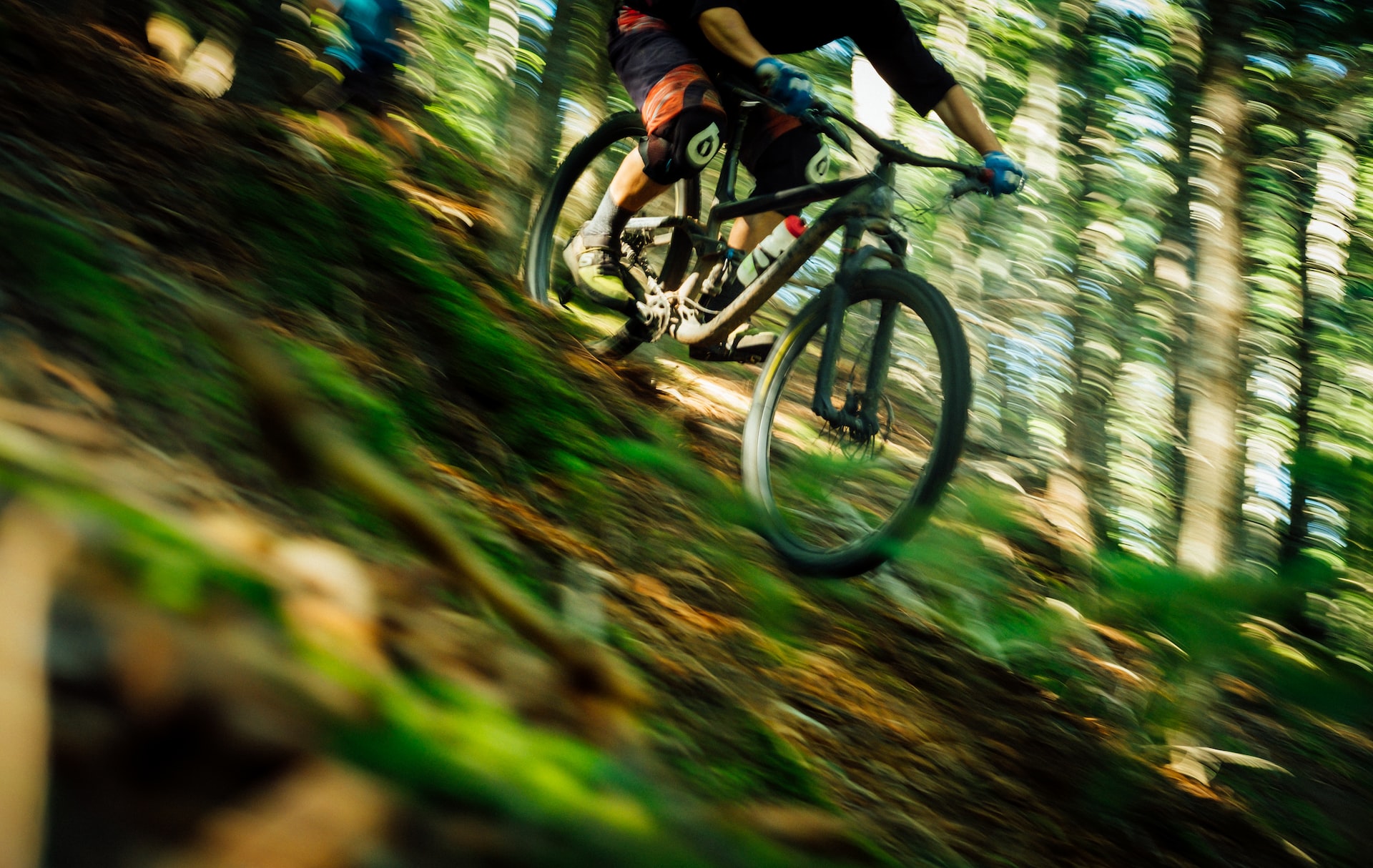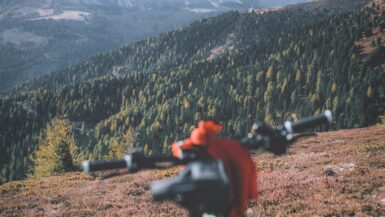If you have an affinity for off-road biking, you may wonder how to find mountain bike trails near you. Many people are unaware of their area’s excellent mountain biking opportunities or don’t know where to begin looking. Fortunately, many different resources are available to help you discover the best mountain biking trails near you. With a few simple tips, you’ll be on your way to exploring your backyard in no time. This article will discuss finding mountain bike trails near you, including where to look for local courses and what to consider when planning your riding.
Choosing a Trail
The internet is your best friend when finding mountain bike trails near you. Sites like Singletracks and MTBProject are excellent resources to start your search. They offer a detailed description of the tracks, along with user reviews and ratings. It’s a great way to get a feel for the terrain and difficulty of each route before you commit to tackling it. Additionally, the platforms allow you to chat with other riders in the area and ask for advice.
Visit Local Bike Shops
Hitting your local bike shop is an invaluable option when finding local trails. Local bike shops often have a wealth of knowledge about the area trails and can point you in the right direction. Additionally, many bike shops organize group rides, which can be a great way to get out and ride with other cyclists.
Network with Other Riders
Connecting with other mountain bikers is a great way to learn about new trails. Join a local mountain biking club or use social media to communicate with riders in your area. Other riders often provide the best advice and tips on trails. Additionally, they may know of secret spots that you wouldn’t be able to find on your own.
Research Local Maps
There are a variety of tools available to research trails and get a sense of their difficulty as well as terrain. Websites like OpenStreetMap and Google Maps can provide you with maps of the tracks. This helps you understand the trail’s layout and difficulty before tackling it. Additionally, sites such as Trailforks can provide detailed information about your area’s tracks.
Check the Weather
When finding trails, it’s important to remember to check the weather before you set off for your ride. Some tracks may be too wet, muddy, or icy to attempt, so it’s essential to research the trail conditions beforehand. Additionally, it’s wise to check the weather in case of storms or high winds that could make the trail too dangerous to ride.
Difficulty Levels
Finding the right mountain bike trail for you can be an exciting adventure. There are many factors to consider when selecting a track, such as a difficulty level, length, terrain, and location. Understanding the different difficulty levels available for mountain bike trails can help you identify a route that is suitable for your skill level and also ensure you have a great ride.
Understanding Mountain Bike Trail Difficulty Levels
Mountain bike trails are typically ranked from easy to difficult. Generally, accessible courses are suitable for beginners and families, while more difficult paths are meant for experienced riders. Easy trails often have few obstacles and are wide enough for riders to pass each other. They usually feature flat terrain, with a few hills that can be easily managed. Most beginner trails can be ridden within an hour.
Moderate to Difficult Trails for Experienced Riders
The next level of difficulty for mountain bike trails is moderate trails. These are typically longer than easy trails and feature more elevation changes and obstacles. These trails often have narrower pathways and tighter turns, requiring riders to pay close attention to their surroundings. Moderate trails generally take two to three hours to complete and require intermediate riding experience.
Challenging trails, as the name suggests, are for experienced riders who want a challenge. These trails may feature steep climbs, narrow pathways, and technical obstacles. Challenging courses are typically long and require several hours to complete. Before attempting an extreme mountain bike trail, ensure that you have the necessary skills, experience, and physical fitness to finish the track safely.
Finding Mountain Bike Trails Near You
Once you have an understanding of the different types of mountain bike trails and their difficulty levels, you can start looking for courses near you. Several websites and apps are dedicated to helping you find mountain bike trails close to home. Most websites have filters you can use to search by trail difficulty, length, terrain, and location.
Additionally, you can search social media sites, such as Facebook and Instagram, for local mountain biking groups and pages. You can also ask local bike stores or search online forums for recommendations. With some research, you can find a mountain bike trail that suits your skill level and offers a great ride.
Safety Considerations
Once you’ve decided to go mountain biking, one of your next steps will be to find a bike trail that’s suitable for your level and enjoyable. But don’t forget about safety considerations! Before you hit the trail, research the terrain and prepare appropriately for your adventure. Here are some tips for finding safe and enjoyable mountain bike trails near you.
Know Your Riding Level
Before you start searching for trails, you must know your riding level. Are you just starting and looking for something relatively easy? Or are you an experienced rider looking for something more technical? Different trails are suited for different levels, so make sure you know your abilities and choose a track accordingly.
Research The Terrain
Once you’ve identified the trails you’re interested in, you’ll want to take time to research them. Start by finding out the extent of the terrain. Is it flat or hilly? Is it densely wooded or more open? The more details you can get, the better prepared you’ll be to tackle the trail. You can find lots of information online or ask other riders who have been there.
Check The Weather
Before you set out on your adventure, it’s essential to check the weather. Make sure that you check the temperature, wind speeds, and the chance of rain. Depending on the type of trail you’re riding, certain conditions may be too extreme for you to tackle.
Choose Appropriate Clothing
No matter what type of trail you’re going to ride, it’s essential to choose appropriate clothing. Dress in layers and opt for bright colors that make you easier to spot in an emergency. Your clothing should be loose enough to allow you to move freely but tight enough to prevent chafing and skin irritation.
Stay Hydrated and Nourished
When mountain biking, it’s essential to stay hydrated and nourished. Bring plenty of water and snacks you can easily access while on the trail. Staying well-hydrated and nourished will ensure you don’t run out of energy during your ride.
Safety Gear Is Essential
When it comes to mountain biking, the appropriate safety gear is essential. Wear a helmet, gloves, and other protective equipment suitable for the terrain and conditions. Also, bring your mobile phone and a map of the area in an emergency.
By following these steps, you can ensure that you’re well-prepared for your adventure and riding on safe and enjoyable trails. Have fun, and stay safe!
Resources for Finding Trails
Local cycling groups on social media can be an excellent resource for finding mountain bike trails near you. Be sure to join and participate in cycling-related groups in your area with members who know the area and can share their knowledge. Involvement in these groups can provide tips on where to find trails and what to avoid. Plus, it’s a great way to meet other bikers and potentially arrange rides with them – they may even have insider knowledge of some trails that you didn’t know existed.
Check Out Local Bike Shops
Local bike shops are another great source of information. Often, shops near you may have trails near your area that they recommend for rides. Shops will frequently post information on their website about local courses and directions for getting to them. Plus, many bike shops organize group rides to help introduce you to local trails.
Research Online Resources
In addition to local cycling groups and bike shops, there are many online resources for finding trails near you. For example, websites such as Trailforks, Singletracks, and MTBProject offer maps of routes and reviews from other riders. These sites can provide helpful information that can give you a better idea of the trails and which ones are right for your skill level.
Reach Out to National Organizations
National organizations like IMBA and the National Off-road Bicycling Association (NORBA) provide trail-building and advocacy for mountain bikers. Reaching out to these organizations is a great way to learn about the trails and any in the works.
Go Exploring
Finally, one of the best ways to find a mountain bike trail near you is to go out and explore. There are often courses in your area that are unknown or hidden gems. Keep an eye out as you’re driving or riding around your neighborhood; you may be surprised at what you find.
Getting Started
When finding mountain bike trails near you, the first step is to do some research. Before you hit the trails, you must know what you’re getting yourself into. Check local newspapers, magazines, and websites for information about nearby trails. Many courses can be found by searching online, while others may require an in-person visit to a local bike shop. Ask where you live to find out if anyone knows about local trails.
Check Online Resources
Once you know what trails are available in your area, you’ll want to check out online resources to find even more options. Many websites, blogs, and forums are devoted to finding the best mountain bike trails near you. Check out websites like MTB Project, Trailforks, and Singletracks for detailed info about courses in your area.
Visit Local Bike Shops
Local bike shops can be a great source of information regarding mountain bike trails. Many bike shops have detailed maps of area trails, and they may even have staff members who have ridden them. Bike shop employees are happy to answer questions and often have great advice on which trails to try first. Don’t be afraid to ask them questions and get tips on trails.
Find a Group to Ride With
It can be intimidating to venture out on the trails alone, so why not find a group to ride with? Local biking clubs and meetup groups are a great way to find like-minded riders and explore the trails together. You will get to meet other riders, and having someone to show you the ropes can make the experience more enjoyable.
Get Familiar With the Trails
Once you’ve identified a few trails to explore, it’s time to get familiar with them. Try visiting the courses during the day to get a feel for the terrain and the different features of the trail. It’s also a good idea to check out maps of the routes online or in-person to ensure you know where you’re going.
Prepare for Your Ride
Before you head out on the trails:
- Make sure you’re well-prepared.
- Double-check that your bike is in good condition, and don’t forget to bring any supplies you may need, such as food and water, a spare tube, a spare tire, and a pump.
- Wear the proper safety gear and ensure you have a first aid kit in an emergency.
Have Fun Riding
Once you’re familiar with the trails and all the necessary preparations are done, it’s time to hit them and have some fun. Mountain biking is a fantastic way to explore nature and challenge yourself. Whether you’re a beginner or an experienced rider, the thrill of a good ride will never get old.
Make the Most of Your Mountain Biking Adventure
Finding suitable mountain bike trails to explore can be the key to an outdoor adventure that is both fun and safe. Various resources are available to help you find the best tracks to fit your needs. You can use internet search engines, local bike shops, and maps to see trails specific to your geographic area. You can embark on a fantastic mountain biking adventure with some research and preparation. Check local laws and regulations before you head out, and always follow basic safety protocols to ensure a safe and enjoyable ride. You can experience the joy of a great outdoor adventure with suitable mountain bike trails.






Leave a reply